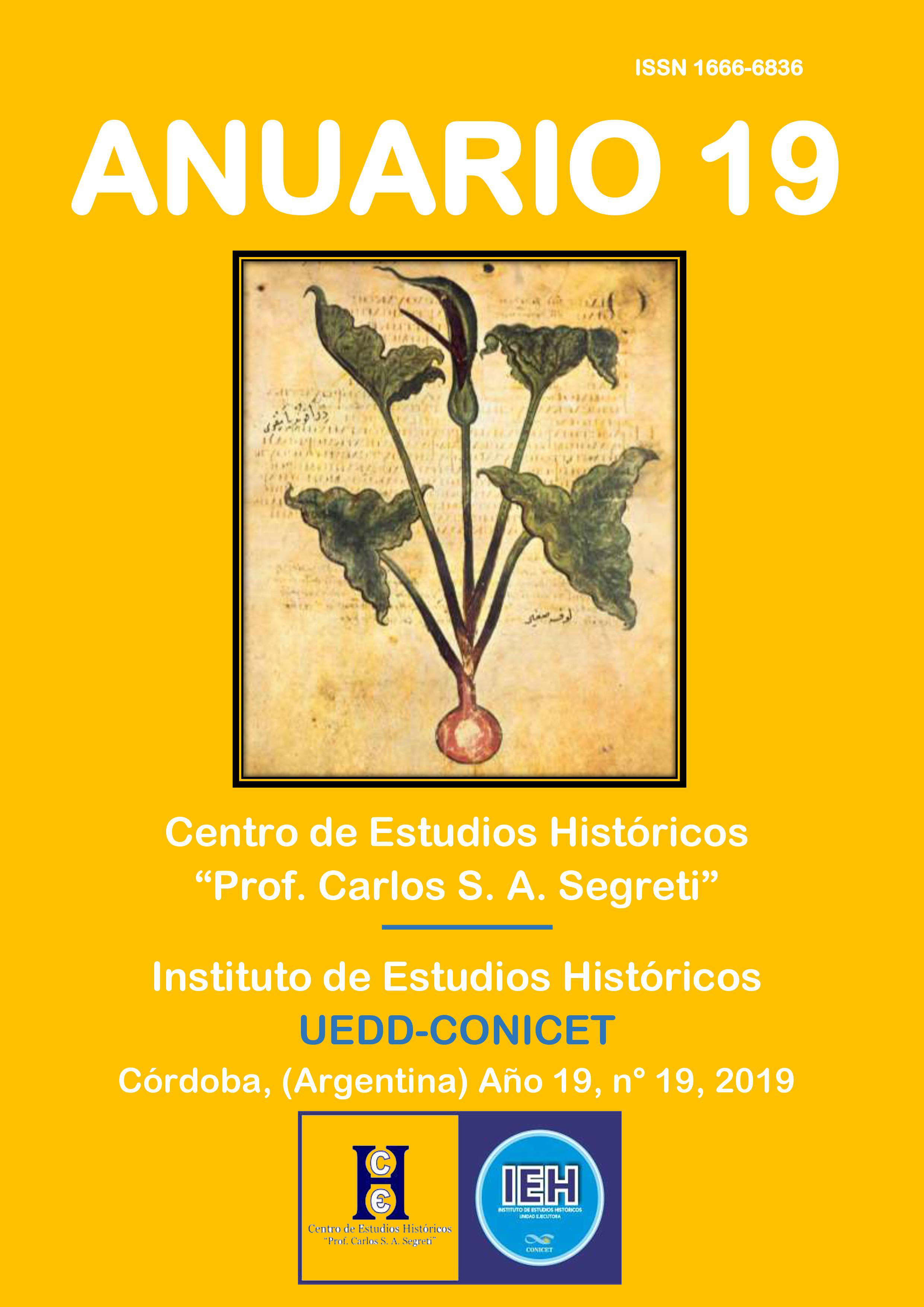State and Aristocracy in the Roman Empire: the question of the colonate
DOI:
https://doi.org/10.52885/2683-9164.v.n19.25626Keywords:
Roman Empire; colonate; State; aristocracyAbstract
This paper deals with the relations between the state and aristocracy in the Roman Empire from the study of the late colonate. It is based on a critique of the so-called "fiscalist" theory of the colonate, in order to prioritize an approach that gives prominence to the autonomous development of social relations between the peasantry and the aristocracy, within the framework of the private economy. It is concluded that only a posteriori the state provided legal coverage to these relations, observable in the tax legislation on colonate.
Downloads
References
ASTARITA Carlos, “La primera de las mutaciones feudales”, Anales de Historia Antigua, Medieval y Moderna, Buenos Aires, vol. 33, 2000.
ASTARITA Carlos, "Las tesis de Alain Guerreau", Edad Media. Revista de Historia, Valladolid, vol. 6, 2004.
BANAJI Jairus, “Modernizing the Historiography of Rural Labour: an unwritten Agenda”, BENTLEY Michael (ed.), Companion to Historiography, Londres y Nueva York, Routledge, 1997.
BANAJI Jairus, “Producción en masa, economía monetaria y vitalidad comercial del Mediterráneo”, Sociedades Precapitalistas, La Plata, vol. 5, núm 1, 2015.
BRANSBOURG Gilles, “The Later Roman Empire”, Andrew MONSON y Walter SCHEIDEL (eds.), Fiscal Regimes and the Political Economy of Premodern States, Cambridge, Cambridge University Press, 2015.
DE NEEVE Peter W., Colonus. Private Farm-Tenancy in Roman Italy during the Republic and the Early Principate, Amsterdam, J. C. Gieben, 1984.
FERNÁNDEZ Damián, Aristocrats and Statehood inn Western Iberia, 300-600 CE, Filadelfia, University of Pennsylvania Press, 2018.
FIKHMAN Itzhak, "De nouveau sur le colonat du Bas Empire", Papyrologica Florentina, 19, 1990.
GASCOU Jean, “Les grands domaines, la cité et l’ état en Egypte byzantine”, Travaux et Mémoires, París, núm. 9, 1985.
GREY Cam, Constructing Communities in the Late Roman Countryside, Cambridge, Cambridge University Press, 2011.
HARDY Edward R., The Large Estates of Byzantine Egypt, Nueva York, Columbia University Press, 1931. “For Hardy autopragia is the crux of Byzantine provincial feudalism”, BANAJI Jairus, Agrarian Change in Late Antiquity. Gold, Labour and Aristocratic Dominance, Oxford, Oxford University Press, 2001.
JONES Arnold H. M., “The Roman Colonate”, Past & Present, Oxford, vol. 13, 1958.
JOHNSON Allan C. y WEST Louis C., Byzantine Egypt: Economic Studies, Princeton, Princeton University Press, 1949.
LO CASCIO Elio (ed.), Terre, propietari e contadini dell'impero romano: dall'affitto agrario al colonato tardoantico, Roma, La Nuova Scientifica Italiana, 1997.
MATHISEN Ralph (ed.), Law, Society, and Authority in Late Antiquity, Oxford, Oxford University Press, 2001.
MEIKSINS WOOD Ellen, De ciudadanos a señores feudales. Historia social del pensamiento político desde la Antigüedad a la Edad Media, Madrid, 2011.
RÈMONDON Roger, “Les contradictions de la société égyptienne à l’époque byzantine”, The Journal of Juristic Papyrology, Varsovia, núm. 18, 1974.
SARRIS Peter, Economy and Society in the Age of Justinian, Cambridge, Cambridge University Press, 2006.
SIRKS Boudewijn, “Reconsidering the Roman Colonate”, Zeitschrift der Savigny Stiftung für Rechtsgeschichte – romanistische Abteilung, Graz, núm. 110, 1993.
SIRKS Boudewijn, “The Colonate in Justinian’s Reign”, The Journal of Roman Studies, Oxford, vol. 98, 2008.
WICKHAM Chris, Framing the Early Middle Ages: Europe and the Mediterranean, 400-800, Oxford, Oxford University Press, 2005.
Downloads
Published
Issue
Section
License
Aquellos autores/as que tengan publicaciones con esta revista, aceptan los términos siguientes:
- Los autores/as conservarán sus derechos de autor y garantizarán a la revista el derecho de primera publicación de su obra, el cuál estará simultáneamente sujeto a una Licencia de reconocimiento de Creative Commons. Se puede compartir, copiar, distribuir, ejecutar y comunicar públicamente la obra, siempre que: a) se cite la autoría y la fuente original de su publicación (revista, editorial y URL de la obra); b) no se use para fines comerciales; c) no se altere, transforme o genere una obra derivada a partir de esta obra.
- Los autores/as podrán adoptar otros acuerdos de licencia no exclusiva de distribución de la versión de la obra publicada (p. ej.: depositarla en un archivo telemático institucional o publicarla en un volumen monográfico) siempre que se indique la publicación inicial en esta revista.
- Se permite y recomienda a los autores/as difundir su obra a través de Internet (p. ej.: en archivos telemáticos institucionales o en su página web) después del proceso de publicación, lo cual puede producir intercambios interesantes y aumentar las citas de la obra publicada. (Véase El efecto del acceso abierto).









